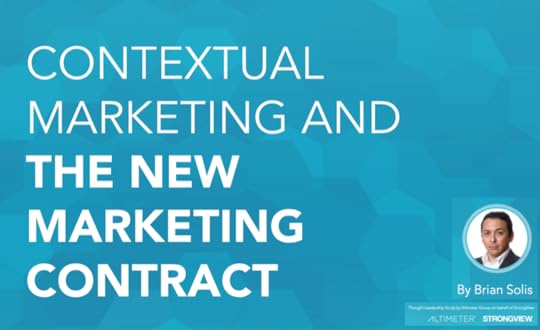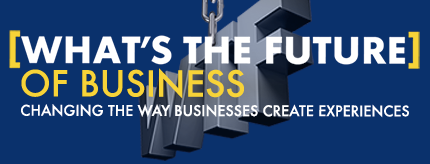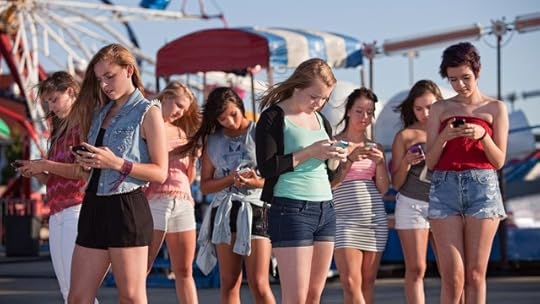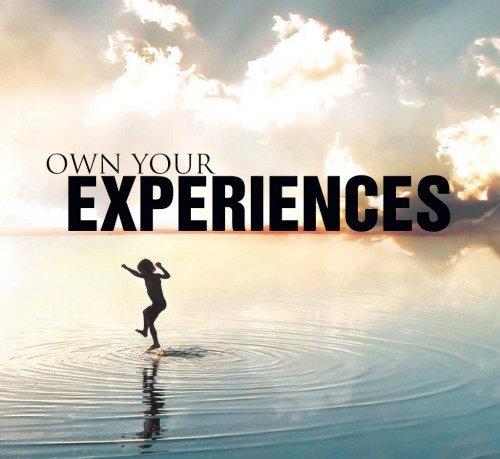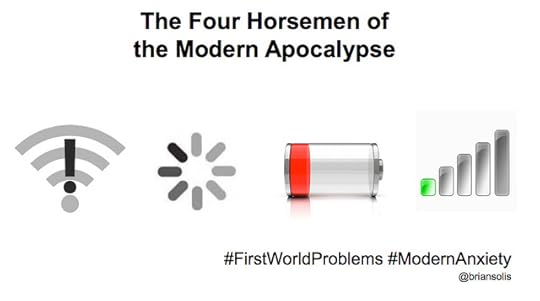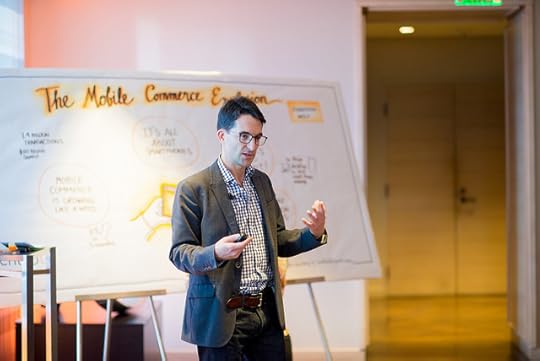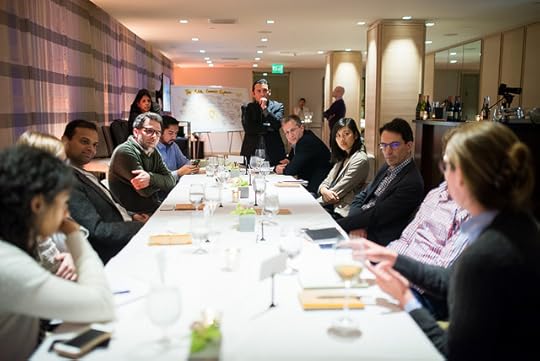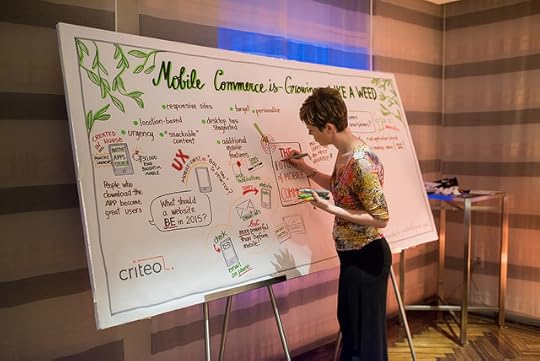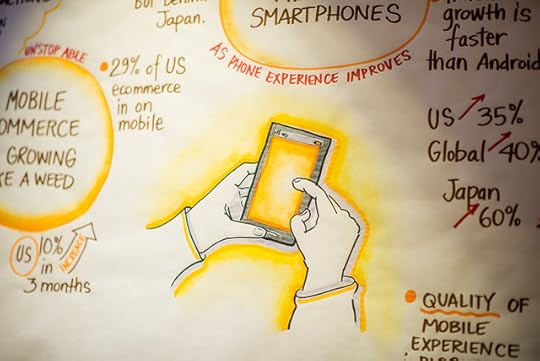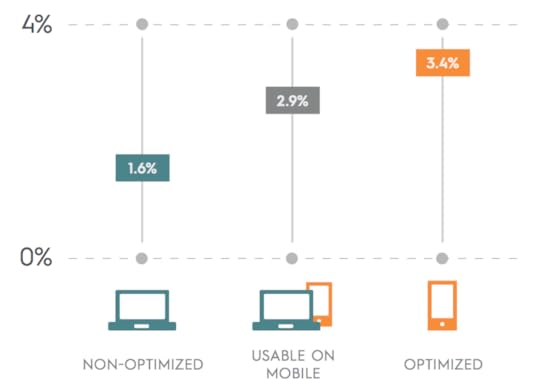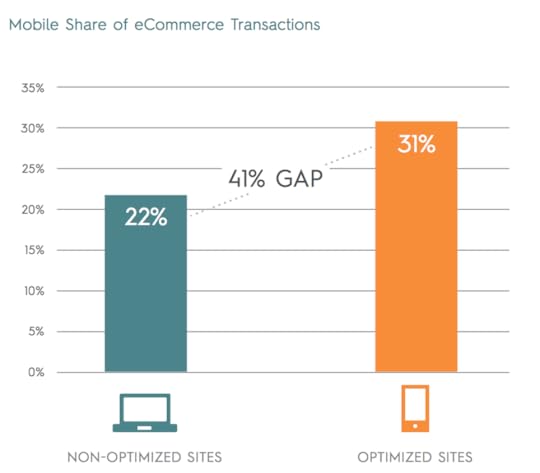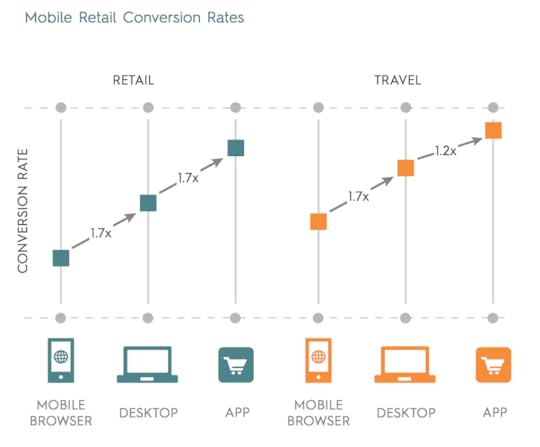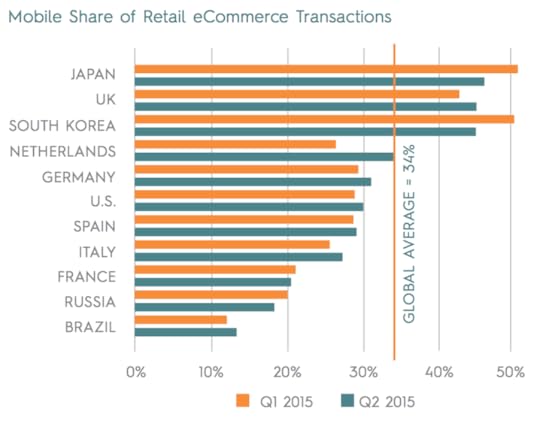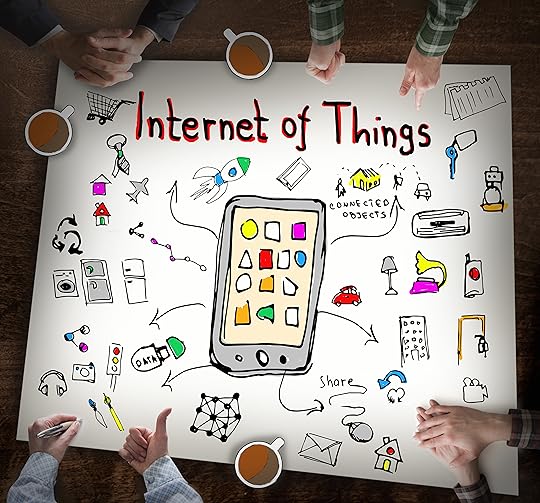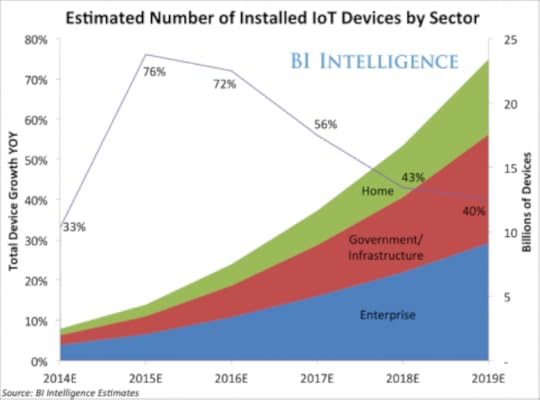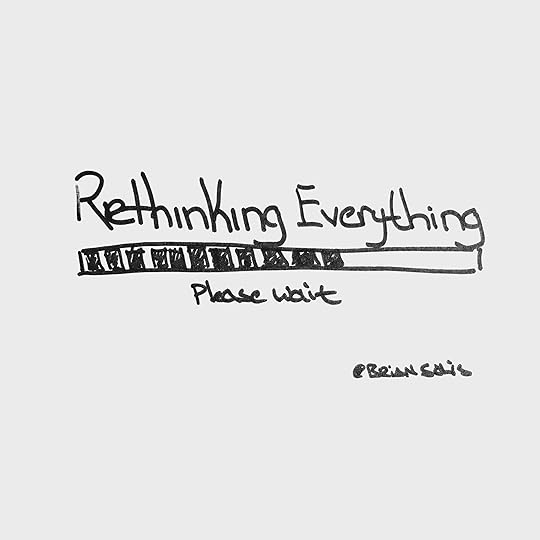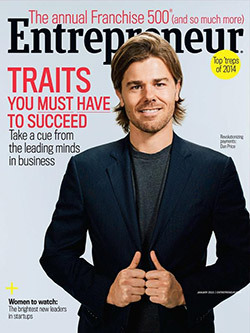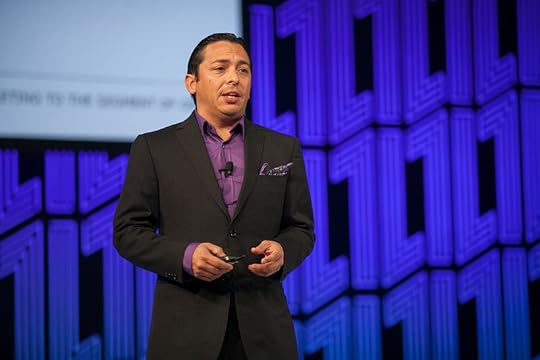Brian Solis's Blog, page 101
July 16, 2015
The New Marketing Contract and Why Context is the Future of Marketing
We live in a time of great technology evolution and revolution. Innovation is not only upon us; it affects, even disrupts, us as marketers and as consumers of other businesses. Your customers are more connected than ever before and they’re always on. The number of touchpoints between businesses and customers has exploded. Technology is everywhere and something new is always on the horizon. Wearables. Smart watches. The Internet of Things. Everything is changing.
Indeed, today’s consumers are more empowered than any other generation to engage with brands on their own terms. They have higher expectations for the experiences delivered by their favorite brands. As a result, marketing is no longer what it used to be.
In order to maintain engagement with this new breed of connected consumers, brands need to leverage real-time contextual data to better understand, engage and deliver value at the moment of interaction. People just want to feel like brands get them. To do so requires technology to enliven the “audience” and shift from trying to convert eyeballs, clicks and conversions to investing in context to earn attention, make engagement relevant and value-added and build relationships that matter.
It’s time for businesses to establish a new marketing contract with customers
Digital marketing is at a crossroads, and it’s the brands that understand the role of context in delivering customer value that will excel in this new era of connectivity. Context creates a return on all things that add value to you and your customers. It’s mutually beneficial at every step. Context sets in motion an entirely new value cycle that with investment only expands in reach and relevance.
With all the data streams available today and technology to understand and act on it, marketers have no excuse for keeping up with the status quo. And, they need to because connected customers expect a new marketing contract.
What’s the new marketing contract? I partnered with StrongView, a leading provider of contextual marketing solutions, to specifically answer that question in detail. The result is a 13-page ebook that explores the market conditions, consumer behaviors and emerging technologies that are enabling brands to better engage customers with contextually relevant messages.
Additionally, we review…
Why today’s connected consumers expect inspired brand engagements.
How technology plus empathy create contextually relevant communications.
A step-by-step breakdown of real-world contextual brand engagements that help inspire new, contextually-driven strategies.
It’s available for free here (email gate).
Indeed, a new marketing contract is needed to capture the attention of your connected customers. You must earn it. And, once you have their attention, you must promise to do something meaningful and personal with it. Context is at the center of new engagement. It is the new minimum required for them to, in turn, engage with you.
Connect with me… Twitter | LinkedIn | Facebook | Youtube | Instagram | Pinterest

July 13, 2015
Today’s Digital Video Revolution & The Future of Brands
Guest post by Brendan Gahan (@BrendanGahan), a YouTube marketing expert helping Fortune 500 brands with their YouTube influencer and community building campaigns. He was named Forbes 30 Under 30 in Marketing & Advertising and one of the 25 Top YouTube Business Power Players for 2013.
The past month there’s been a wealth of speculation in the blogosphere regarding livestreaming services Periscope and Meerkat.
Who is going to win?
Which platform will crush the other?
Which app is the future of livestreaming?
But… who cares?
These ongoing debates remind me of the Vine vs Instagram video conversations of two years ago; undoubtedly, in another two years, more speculation will rage on around some other new set of video services.
These debates focus on the trees, and not the forest. The real battleground is around text vs digital video.
Digital video is quickly becoming the de facto form of communication.
Since the introduction of YouTube ten years ago, digital video has been wildly disruptive, upending the traditional advertising, celebrity, and production processes. People embraced YouTube like a fish to water.
Everyone my age (I’m 32) grew up with dial up internet where the bandwidth barely supported text, let alone video. As a result our early days online, and even today, are largely centered around the written word. We eagerly connected with friends on AIM, or made crappy GeoCities sites in the late 90’s. And, now in adulthood I spend an excessive amount of time reading blogs like Gawker and Buzzfeed.
However, this text centric digital world has disappeared for younger audiences.
Teens don’t read.
A survey of High School seniors in 2014 found that they don’t read top websites (73 percent don’t read Buzzfeed, 96 percent don’t read Gawker or Mashable). They were obsessed with video, with 65 percent of the seniors participating in the survey using SnapChat and 97 percent using YouTube.
It’s no coincidence that Tumblr, Twitter, and Facebook have all added video to their platforms recently. None of them want to be irrelevant as content consumption changes with younger audiences.
But why is video so successful?
The introduction of new technology does not mean its adoption.
There’s something emotionally spectacular about video. When our brains recognize the human form, they release chemicals, such as dopamine-which is often associated with love, motivation, sexual gratification, and addiction, which drive emotional connection.
Having this level of neurological engagement in mind, anything a brand does that falls short of our expectations for a seemingly-human online interaction.
However, as a brand, how do you regularly produce stimulating content across multiple platforms and adapt to a generation whose media habits are foreign to you?
Today kids come home from school and jump on YouTube to catch up with their favorite vloggers and send Snapchats to friends. Twenty years ago, they would go home and call their friends with a rotary phone, flip through a magazine, and watch TV.
These changes pose challenges to brands who are unable to translate their message to YouTube, the oldest digital video platform of all. Few have been able to bring to life their brand in a compelling way in digital video, in fact there’s not a single brand in the top 100 most subscribed YouTube channels. And, while major advertisers and brands are still in the very early stages of adoption – they’ll have to adapt faster or risk disappearing entirely as new platforms emerge.
Throughout history, the most successful brands adopted and embraced new mediums, while those who failed disappeared.
This happened with radio, when it was popularized in the 20’s, and the brands who survived (and thrived) during this massive adoption were automobile, oil industries and consumer goods (Ford,Tidewater Oil, and Pepsodent). With the introduction of TV in the 50’s, Brands like Tidewater and Studebaker failed to adapt and died off, while Ford, Chrysler, GE and Kraft thrived as they jumped on to the platform.
In the 60’s a brand could spend months on a TV spot. The commercials were highly controlled and analyzed piece of content to ensure they represented the brand, each frame could be analyzed and thought out before ever being shown to the public. This level of control is impossible today.
It used to be YouTube was the dominant digital video platform, but just in the last three years we’ve seen an explosion of additional services such as Vine, Snapchat, Instagram video, Facebook video, Twitter video, Tumblr Video, Periscope and Meerkat.
As a result, the amount of video created has increased dramatically while brand content hasn’t scaled with consumption.
Things are going to continue to change, and that rate of change is going to speed up (Moore’s law) and video will be at the center of communication and content.
Kodak became irrelevant by failing to adopt digital cameras. The largest cab company in the world, Uber, doesn’t own a single car because of its adoption of mobile technology. Brands will be invisible if they fail to translate their message to the incoming digital video mediums.
If the last ten years are any indication, most brands had their Kodak moment years ago and are gradually trudging ahead toward irrelevancy by failing to translate their brands into the digital video mediums of the future.
Image Source: EmpowHER

July 9, 2015
The Moment of Truth: Connected Customers and How to Re-Imagine Customer Experiences
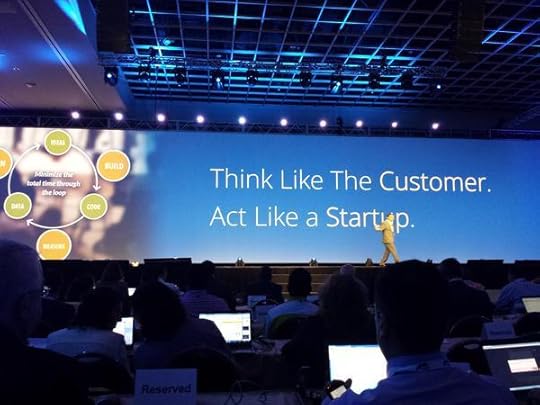
And then one day, it happened. Customers changed. How they make decisions changed. What they value and how they want to do business changed. The funny thing is…we didn’t. Now we can and a new generation of technologies and services make it possible to not only react but lead customer experiences moving forward.
To effectively compete in the digital economy, you are left with no choice; become customer-obsessed or lose! Every moment-of-truth counts when it comes to customer loyalty. For some, this paradigm shift will be easy. For many, you will have to re-think your business model.
#AdaptorDie
I was invited to present at PegaWorld in front of 3,000 (gulp) technology and business leaders in Orlando to share views on how customers have changed and are changing. But that was just the beginning. I also broke things down to show how technology, and our own biases and processes, got in the way of evolution and innovation. Sometimes all we need to do is take a step back to see new ways to adapt and thrive.
I hope this helps presentation helps you…
Connect with me… Twitter | LinkedIn | Facebook | Youtube | Instagram | Pinterest

July 8, 2015
Using Big Data to Understand Small Moments of Truth
Guest post by Gib Bassett (@gibbassett), gib.bassett@oracle.com
“Businesses today must invest in experiences because that’s what people want.” – Brian Solis
So says Brian in this recent post. He goes on to qualify this statement further, saying people today simply don’t care about products, services or offers. What they desire and what they respond to with regularity are superior experiences. I don’t think this is limited to Millennials either – we are all being conditioned to have affinities for businesses that deliver superior customer experiences.
For marketers in industries like retail and consumer products, this is a bitter pill to swallow. Think about it: so much attention around digital marketing is focused on targeting and incentivizing consumers to transact with a particular brand. Changing course almost takes a complete re-thinking of brand and retail business norms; similar to what I’ve written about tracking consumer behavior along the purchase path and re-imagining traditional business models.
The big idea embedded in Brian’s words is that consumers trust most what others report of their experience with your brand – an “ultimate moment of truth.”
This implies that your targeting, offer and communication strategy will forever struggle against something beyond your control – which is true! You cannot control what your customers say about your brand. What you can control is the responsiveness, convenience and quality of the experience you provide your customer.
Small Moments along the Purchase Path
To this end, it’s helpful to think about the activities each of your consumers uniquely engage in throughout the purchase journey. Most of these are shifting to digital, even in the store when you consider beacons, interactive displays and RFID tags on products themselves.
Both retailers and consumer goods companies engage in numerous activities to create, fulfill and spur repeat demand in a marketplace that’s no longer online or offline – it’s simply about how the customer wants to buy.
Multiple functions line up to influence and serve customers in the pre-shop, active shopping and post-shop consumption phases. Their actions all often happen apart one another with little right time coordination. This, and a lack of common understanding, greatly contribute to the challenges these industries have with sales growth and differentiation.
Decades of technology investments in silos and the disruption caused by online channels, mobile and social media have created a cobbled-together infrastructure ill-suited to a harmonized view of the customer experience. When faced with the reality that pushing product messages, promotions and transaction-centric communications on your customers are ineffective, it’s difficult to imagine how to develop the right insight necessary to change course.
As Brain also points out, “Customers aren’t following the customer journey you designed because they’re too busy hacking it.” The moment of truth is in constant motion and varies by person.
Understanding the many small moments that individual consumers face when approaching a purchase decision is a good place to start – no matter if you work in marketing, sales, customer service, supply chain or manufacturing. Everyone has a mandate to execute against such an understanding.
Cloud Innovation and Speed
Advances in cloud computing and analytics have the potential to transform the way consumer-facing businesses think about their customer relationships. The ability to ingest and analyze data from any source means business leaders can begin to ask questions of their business that traditional business intelligence doesn’t account for – questions which can illuminate the ways you delight or frustrate your most valuable assets, your customers. This is how you learn to succeed through differentiation.
The most progressive retail and consumer goods organizations are staffed with data scientists seeking to work with data driven managers to partner with on really hard business problems. If you work for one of these companies, you should reach out to your analytics teams to talk about a project to understand how well your function is meeting the needs of your consumer. Multiple data sources, different analytical methods, and iteration will most certainly yield insights that you didn’t expect – and make a difference you can measure.
If you work in the many thousands of less progressive companies yet to embrace data science and advanced analytics as a core competency, all is not lost. These companies are starting to carve out small teams of analytically minded people from IT and other areas, and giving them a mandate and small budget to explore how new forms of analytics can unlock new forms of value. They are hungry to demonstrate value, so if you lead a team aligned to any stage of the consumer’s journey, reach out to scope out a project.
It’s only through proactive efforts by business leaders that analytics will succeed in helping retail and consumer products industries adapt to an almost constantly-changing consumer landscape. Cloud computing and ever-better analytical tools are making it increasingly easier for business leaders to tap into the insights embedded in the many small moments that make up a delightful customer experience.

July 7, 2015
State of Mobile Commerce: An Evening in San Francisco with Criteo
I recently had the opportunity to co-host an event in San Francisco with Jonathan Wolf of Criteo to discuss the past and future of retail and mobile commerce. That evening celebrated the release of the company’s quarterly State of Mobile Commerce Report, based on its pool of online shopping data covering more than a billion transactions totaling over $130Bn of annual sales.
That evening, we would entertain some of the most interesting people documenting or contributing to the future of ecommerce, etail and ad tech. Those who joined us included representatives from Google, Groupon, POPSUGAR, Rue La La, and Criteo of course. We were also joined by notable press covering the space such as Amir Efrati of The Information, Salvador Rodriguez of International Business Times, Rolfe Winkler and Deepa Seetharaman of The Wall Street Journal and Leslie Hook of Financial Times.
This year has been a pretty incredible year for mobile. Yet, it’s incredibly under appreciated by brands and retailers, especially in the U.S. In research I published earlier this year with good friend Jaimy Szymanski, we learned that to be success in mobile, businesses would have to devise both mobile-first and mobile-only strategies. Bolting mobile onto existing digital journeys isn’t a native or intuitive solution and only adds friction to the customer experience.
The bottom line is that mobile users expect a mobile experience. Sounds commonsensical but it’s not. Instead, today’s CX forces customers to endure desktop-like experiences on the small screen and/or pushes them to complete journeys or transactions across multiple devices. In fact, in my work with Google, I learned that mobile behaviors and expectations are outpacing the prowess, thinking and competence of many strategists as the journey fractures into “micro moments.”
In Criteo’s latest report, we learned of several trends that are pointing to mobile as the future of eCommerce. Following are key insights from the two reports, many of which will help you make the case for new investments in strategies and technology…
Globally, mobile now accounts for 30% of eCommerce transactions.
Mobile will be 50% of US eCommerce transactions as conversion rates reach those in Asia.
Mobile is now about purchasing, not just researching: Conversion rates are high, across all devices and retail categories.
Smartphones now generate more transactions than tablets.
A third of fashion transactions now come from mobile, with average order values close to desktop levels.
Top quartile US retailers generate almost 40% of their ecommerce transactions from mobile, against 27% for US overall.
It’s not just Apple: Android phones now generate a third of US smartphone shopping transactions, and much more internationally.
U.S. mobile transactions cross 30% share: And it’s much higher for top-quartile retailers.
Retailers who optimize their mobile sites generate many more mobile transactions than those who don’t: Optimized sites have a better conversion funnel at every stage.
Apps generated almost 50% of mobile transactions for retailers who have made their app experience a priority: Mobile apps perform better than any other channel, including desktop.
Cross-device usage is now enormous: Consumer use of multiple devices to make a single purchase makes up 40% of eCommerce transactions.
Conversion rates directly correlate with the quality of the site. The more optimized the site, the higher the conversion rate.For websites that are usable on mobile the conversion rate is 2.9%, versus1.6% for non-optimized sites.When a site is optimized, the conversion rate increases to 3.4%. This is exactly what Jaimy and I found in our research. Brands need to think mobile-first and mobile-only!
Optimized sites see a larger share of mobile transactions than non-optimized sites.The difference is significant: non-optimized sites have 22% of their eCommerce transactions via mobile versus 31% for optimized sites.This represents a potential 41% opportunity for sites that are not optimized today.
When done right, apps convert visits to sales better than desktop. The user experience of apps is better than desktop and browser but not just because it’s an “app.” Optimized apps are designed to focus tasks, transactions and desired behavior into desired outcomes. Additionally, apps are used by more loyal customers, leading to higher conversion rates. In retail, consumers using the app convert at a rate three times higher than those using a mobile browser. With travel, the conversion rate for apps is almost two times that of mobile browser.
Asia and UK consumers continue to be the mobile leaders globally. mCommerce is now 34% of all eCommerce transactions globally — based on an accurate weighting of eCommerce market size by country.The U.S. is catching up with the global average, with 30% of eCommerce transactions coming from mobile devices.Growth rates are slower in Q2 as the holiday effect of new smartphone sales wears off.
All in all, Criteo leaves us with four trends to watch and more so, to get in front of as a leader in mobile commerce…
One: Growth in mCommerce is unstoppable. By year-end, mobile share of eCommerce transactions is forecast to reach 33% in the U.S. and 40% globally.
Two: Smartphones will continue to displace slower-growing tablets due to larger available screens. Apple is gaining ground on Android, but both are winners vs. a shrinking desktop.
Three: Apps are the next frontier. Advertisers will start to significantly invest in their mobile app as a way to drive more conversions than desktop and engage with their loyal customers.
Four: Dealing with cross-device behavior is the biggest challenge and opportunity for marketers in 2015. With 40% of sales already cross- device, marketers have to talk to users and no longer to devices.
Here, I share highlights of the evening on video…
Pictures from the event are on flickr…
Download the report here…
Connect with me… Twitter | LinkedIn | Facebook | Youtube | Instagram | Pinterest

July 1, 2015
Internet of Things is Here: What’s Your IoT Strategy?
The Internet of Things (IoT) is so much more than smart refrigerator that tell you when you need to go to the grocery store, wearables that track your steps or the smart watches you’re thinking about not getting. It’s the nervous system that sends and tracks important information between things, places and people.
From smarter industrial applications to cities to health care to home automation to automobiles and everything in between, IoT is changing not only your personal life, but offers great opportunities for innovation in business right now. In fact, by 2020, an estimated 50 billion devices around the globe will be connected to the Internet. Postscapes estimates the potential economic impact by 2020 will range from about US$2 trillion to more than $14 trillion. And, that’s just a few years away!
As you can see in the graph below, according to BI Intelligence, the Internet of Things will be the largest device market in the world. And, IoT will result in $1.7 trillion in value added to the global economy in 2019.
Everything talks to everything and people learn about what was previously invisible or unattainable before. There’s much to learn in the process. But one of the areas of low hanging fruit for businesses in IoT is exploring how connected devices, people and processes can increase efficiency and lower costs within the home, city, and workplace.
According to Frank Burkitt writing for Strategy+Business, one in every six businesses will roll out an IoT-based product. Roughly 75% of them are currently exploring how to use the IoT to improve internal operations and services. More so, IoT is also set to revolution the customer experience by helping companies personalize or customize products and services based on data and behavior sent directly by customers by using connected products or wading through connected places.
The result is innovation across the board.
The question is, how will your company build value in this new world and what role will you play in its transformation?
For starters, let’s take a broad yet organized view of how the emerging landscape of IoT players. They tend to fall into one of three camps with each reflecting a different type of enterprise as Burkitt learned.
1) Enablers: Develop and implement the underlying technology. Enablers are primarily technology-oriented companies, such as Cisco, Google, HP, IBM, and Intel. These vendors essentially build and maintain the IoT infrastructure that enables Engagers to develop their own connected services.
2) Engagers: Design, create, integrate, and deliver IoT services to customers. Engagers offer the direct link between IoT and the market. They use the endpoint, hub, platform, and service offerings (the IoT infrastructure) created by the Enablers to produce services for consumers and businesses.
3) Enhancers: Devise their own value-added services, on top of the services provided by Engagers. These companies provide integrated services that reframe and repackage the products and services of the Engagers. Their value proposition stems from creating and extracting value from the data, relationships, and insights generated from IoT devices and activity.
As IoT grows, the implications for business model innovation are huge. But that’s just the beginning. Opportunities for innovation and optimization in customer and employee engagement, product development, services and overall experience design is largely unwritten and yours to define. All it takes is to not only explore where you want to be and what you want to do but also think shift your perspective to see it in two ways: 1) Where you add value and to whom and 2) Where and how can you capture value to improve company efficiencies, identify opportunities, and learn. Like with anything new, we can either innovate or embrace mediocrity. And as competitors explore these new horizons, your competitive advantage comes down not to technology but how you will employ it to improve what exists and introduce what has yet to be realized.
Connect with me… Twitter | LinkedIn | Facebook | Youtube | Instagram | Pinterest
IoT Photo Credit: Shutterstock

June 25, 2015
Completely Rethinking Marketing Is Essential in Today’s Customer-Centric World
Guest post by Fred Studer (@fredstuder), Chief Marketing Officer at NetSuite
As my friend Brian Solis says, “This is a time to question everything.”
Let’s start with marketing, because it’s overdue for a revolution.
Today’s customers are in the driver’s seat – it’s a buyer’s market and the buyers are better informed than ever. Prior to making a purchase today, customers research and compare products assiduously while tapping into both the opinions of people they know directly and reviews from online communities they trust. In fact, by the time a customer engages with an organization, they may well already be 70 percent of the way along a traditional sales cycle.
The challenge for all marketers is to re-imagine how and when to engage with this new breed of customer. When it comes to the channel or channels of engagement, the customer now calls the shots, so we need to ensure that we can deliver brand and message consistency across every single channel from in-person to online to phone to email and more.
Quick question: How many devices do you have on your person right now? The average is three and I have six! We need to offer the same marketing outreach and overall customer experience across all devices and engagement platforms. Our end goal must always be consistency, while connecting with the customer in the way they want to and at the time of their choosing. Our ultimate aim is to lay the foundations to build lifelong relationships with our customers based on trust via our marketing.
At this point, I should stress that rethinking marketing doesn’t necessarily mean throwing out all the old marketing techniques. Keep what works – just make sure that those tools can be seamlessly slotted into your newer marketing outreaches. And, I’m not talking about ‘what works’ as measured on a hunch basis or a gut feel, it’s what works based on the application of marketing analytics.
Big Data-Driven Personalized Marketing
The customer population you and I are addressing is highly diverse – potentially spanning four to five different generations. We have to consider our approach bearing in mind the individual we’re targeting. For an older generation of buyers, any overt use of the data we already have on them may have a negative impact on how they view us and our brand. However, for younger buyers who’ve never known a world without the Internet and have a different conception of online privacy, a highly personalized approach based on historical purchasing patterns, may be welcomed and boost our standing with them.
What I’m seeing emerge is a type of marketing with a very strong focus on individual buyers. This is made possible by aggregating all the relevant real-time and historical information about a customer and combining it with data from third-party sources including partners and social media profiles. This is the best business case and true application of Big Data to marketing – to be able to rapidly construct a rich, living three-dimensional model of an individual customer, not just a 360-degree profile based almost entirely on our own company’s data about that customer.
Customers Become Co-Marketers
As we become more familiar with our customers as individuals, we’re able to build a much stronger bond with them built around mutual trust. In effect, we’re looking to partner with buyers so they also become ambassadors for our brands. We market to them and they, in turn, market us to their customers. In many ways, marketing becomes more focused on community building and then helping to inspire members of that community to engage with their peers. Let’s think of ourselves and our customers as storytellers.
I think back to prehistoric times when communities would gather around a fire to share stories and to learn from each other. I see my role as a marketer to help create sparks of interest in our brand and products and then, together with our customers, to fan those flames into a welcoming blaze. Our customers then evangelize our product to their customers. We build the marketing fire and then our customers stoke it and keep it alight.

June 18, 2015
How the Next Five Years Will Revolutionize Business
Earlier in the year, I spent some time with Jason Ankeny. He was, at the time, writing an article for Entrepreneur on “the next five years” of business for the print edition. He assembled a pretty stellar cast to serve as his panel and I was more than excited to join in.
Ankeny set up the discussion this way…
The period between 2015 and 2020 is poised to redefine virtually every facet of how we live and work. It probably won’t bring jetpacks and hoverboards, but it will usher in other radical technologies, business models, customer experiences and even a new breed of entrepreneurs—a wave of so-called digital natives who think and act differently from every generation before them.
Entrepreneur asked leading futurists and cultural anthropologists what this brave new world will be like, how it will evolve and what you need to know to thrive within it.
I’ve included as excerpt below but you can read the entire article here.
The Future of Generational Relations
The older generation is making decisions based on their experience and how they went through life—going to college, getting a job, getting married, buying a house and buying a car. Today’s generation is rethinking whether or not college is important, and whether they want full-time jobs or want to be entrepreneurs. They’re rethinking whether to buy cars because they can take Uber everywhere. They’re shedding belongings because they don’t want the burdens of ownership. Their value system is profoundly different, and they’re forming relationships with products and services based on the things they value and appreciate. They want authenticity, they want transparency, and they want to know your business is thinking about questions like sustainability.
The Future of Customer Experience
The way we go about business is slowly dying. Connected consumerism says that things are not only changing, but are so radically different that the business models we have today cannot support a much more dynamic approach to the market. Even if you’re over the age of 35, if you use an iPad or social networks or apps, you slowly start to act like a Millennial. It influences how you make decisions and where you go for information. All of this starts to add up differently from being a traditional customer: The touchpoints, the screens we use, our expectations—we become more demanding, more informed and more connected.
The research you do around the digital customer experience allows you to understand where you’re going to make your investments. A lot of times, people go to market believing that the functions of sales and marketing and services are just the bolt-on pieces to go and be successful around your vision and your product, when in fact, it’s the opposite.
The Future of Entrepreneurial Vision
Ideas don’t really count until you can demonstrate relevance, engagement and momentum. Entrepreneurs who have a purpose will succeed, as opposed to entrepreneurs who have a product. If you don’t understand this, you’re destined to be irrelevant because you never tried to be relevant in the first place.
The Panel:
Tom Cheesewright founded the applied futurism practice Book of the Future and is a regular presence on U.K. TV and radio. He previously launched a series of technology-driven startups, including venture-backed big data analytics firm CANDDi.
Peter Diamandis is chairman and CEO of the XPrize innovation competition, executive chairman of Silicon Valley-based teaching organization Singularity University and the founder of more than a dozen high-tech organizations.
Steven Kotler co-founded and serves as director of research for the Flow Genome Project. Diamandis and Kotler have teamed on two books: Abundance: The Future Is Better Than You Think and Bold: How to Go Big, Create Wealth and Impact the World.
Bob Johansen is a distinguished fellow at nonprofit research organization Institute for the Future. His latest book, The Reciprocity Advantage: A New Way to Partner for Innovation and Growth (written with Karl Ronn), argues that businesses can gain a competitive advantage by sharing assets and forming collaborative relationships.
Connect with me… Twitter | LinkedIn | Facebook | Youtube | Instagram | Pinterest

June 10, 2015
Embracing the Audience: 5 Tips on Customer-Based Marketing
After I presented at the Digital Media Summit in Toronto, Sylvia Ng, VP of Growth and Analytics at ScribbleLive, asked for an interview to discuss challenges and opportunities ahead for digital marketers. Following is her summary of our conversation. I wanted to share it with you here…
In the midst of endless blogs, podcasts, tweets, instagrams, and snapchats, how does a brand or business get noticed? Creating a truly effective marketing campaign is about understanding your brand, and more importantly, your audience. Sylvia turned the conversation into five actionable tips that will help you improve your marketing strategy.
1. Stop Talking About Tools and Start Thinking About Strategy
What role do software tools play in engaging the audience?
Software tools facilitate engagement, make marketing departments more efficient, and help scale content campaigns. However, there’s almost too much technology in the software sphere, and a lack of focus on how we’re putting these tools to use. Today’s marketers place too much emphasis on the tool, and software vendors place too much emphasis on the capability but not enough people are talking about what the real human application of any of this stuff is.
Instead, marketers need to start asking “what is it we are trying to scale and why?” and “how do we use any of this technology to make a difference or to matter?”
2. Establish #WDYSF (What Do You Stand For)
How do you navigate the convoluted marketing technology landscape? What technologies do you think are worth keeping an eye out for?
The real challenge, before you concern yourself with software, is to determine what makes your brand or business special. We have to take a moment to think about what is it that really makes the brand relevant or worthwhile and how can you connect or engage your audience in a meaningful and mutually beneficial way.
I often use the hashtag #WDYSF (What Do You Stand For). It’s this idea of just thinking about [what your brand stands for] first, and then what’s the purpose? What’s the mission, and why should I spend my time paying attention to you? What are you going to do for me?
Customers have goals, objectives, challenges, and frustrations. It’s only once you understand this aspect of the consumer that you can begin using marketing tools, graphics, videos, eBooks, and other tools to engage your customers.
The advice I have is to stop acting like marketers, if you have to market that means that there is something wrong.
3. Cultivate “The Embrace”
Social media marketing versus content marketing – where is the industry going?
We need to distinguish between social media marketing and content marketing. What we don’t need is marketers trying to figure out how to keep earning their jobs, getting paychecks, and being part of the buzz, which, is ultimately part of the problem. There’s a tendency to say that content marketing is the new social media marketing. However, I believe this conversation perpetuates the problem and ignores the more pressing need for good content.
Everybody is trying to be the special snowflake in the blizzard and not enough people are focusing on determining why people should even care about their brand’s content in the first place.
Why should you pay attention? What am I going to do with your attention once I have it?
This is what I refer to as “the embrace” and believe that if marketers paid more attention to this aspect of content marketing or marketing overall they would be less concerned with generating buzz and instead spend more time creating the kind of content their audience is looking for. The problem is that everybody is too busy thinking about how to go viral or, you know, how to use whatever the latest platform is. But if we become too preoccupied with technology, we will neglect the experience.
Ask yourself, “do I want to just throw stuff out there and get the view or do I want to do something great?”
The art of engagement is action, reactions, transaction (A.R.T.) and the goal is to open the door for a real experience, to do something that will make the audience feel something. I would like to shift the focus away from conversations like ‘content marketing versus social media marketing’ and towards creating experiences that embrace the audience and that make them walk away saying, “that was amazing.”
4. Observe Your Audience
What tips would you give business leaders looking to ‘embrace’ the audience?
A marketer’s top priority should be understanding their highly social audience. What are their aspirations? What challenges do they face? The trick is to humanize your audience and find out what questions they’re asking. You have to walk through their journey and you see where they go and what they find, and once you do, you really start to understand that all of your marketing, all of the subjects that you have been doing, all of your sad strategies are misaligned to the world you thought you knew versus the world that exists.
Meaningful strategy demands that marketers understand who the new customer is and reverse engineer it. You learn all of the things that you need to do just from observing. It all comes down to looking at the brand and the brand promise. And, we need to pay attention specifically the divide between what you say your brand is about and how your customers experience it. Once marketers understand this experience gap, they can work backwards and rebuild the brand to cater to their audience.
Again, adopt a #WDWSF strategy. Brands have to first ask “what is our experience today?” and “what is our brand?” and then do what it takes to bring it to life.
5. Question Everything You Know
Do you have any recommendations or resources for marketers trying to understand their audience? Or is this a trial and error strategy?
I’m hesitant to declare that there is any one specific resource for understanding the audience. Instead we need to open the door to the humanities. Doing so helps us better understand how to use all these tools to look at the human behavior, to look at the groups of behavior, look at the trends, look at the possibilities.
The best way to do great content marketing is to really learn about the people you’re talking to. One secret of success that I can share with you is that you have to get the other person’s point of view and add it to your own, then you can sort of read in between the lines.
Again, the best way to reach your customers is to learn about your audience and let them inspire you. That’s what Steve Jobs did very well. He watched what people did, their challenges, and also applied new technology to make things better and often innovative.
These are the things that start by really questioning, you know? Why do we do things this way? What if we did this? What if we started from scratch? That’s the advice I would leave anybody with – once you start questioning you realize that the shit that you believed in that was supposed to be the right thing turns out not to be the right thing because times have changed and we just haven’t changed along with it.
I tried to illustrate this point with a common reference to Mahatma Gandhi. It turns out that there’s no proof that Gandhi ever said this oft shared quote, “We must be the change we want to see in the world.” While it’s an important message, many of the famous quotes that we share and talk about are merely interpretations or misquotes.
So, what does Gandhi have to do with marketing in this highly social digital landscape?
It’s a metaphor to remind marketers to challenge established truths and question the marketing rules because they are no longer valid. In the current marketing landscape the true visionaries are the ones who focus on customer-based marketing and continue to question and innovate.
Connect with me… Twitter | LinkedIn | Facebook | Youtube | Instagram | Pinterest

May 27, 2015
No One Will Remember Your Failures; Everyone Will Remember Your Success
No one will remember your failures, but everyone will remember your success. If they do bring up your failures and not your successes, question the value they bring into your world and move forward.
We live in a time when disruption is happening to us or it can happen because of us. Sometimes the past holds us back and sometimes we let fear undermine our ideal future. But, this is the time to change the future. Think about it…what would your future self tell you today? I believe that now’s the time to question everything. As such, rules can be broken giving way for iteration to evolve into innovation.
Truth is that we don’t talk enough about digital Darwinism. Society and technology continues to evolve and accelerate. It impacts customer and employee behavior, expectations and customs as a result. We either #adaptordie. The lesson here is that if you are not going to disrupt your business model, it is going to be disrupted for you. And the good news is that digital Darwinism favors those who try.
The NextWeb revisits Brian Solis’ keynote in Amsterdam
Inquire about speaking
Connect with me… Twitter | LinkedIn | Facebook | Youtube | Instagram | Pinterest


